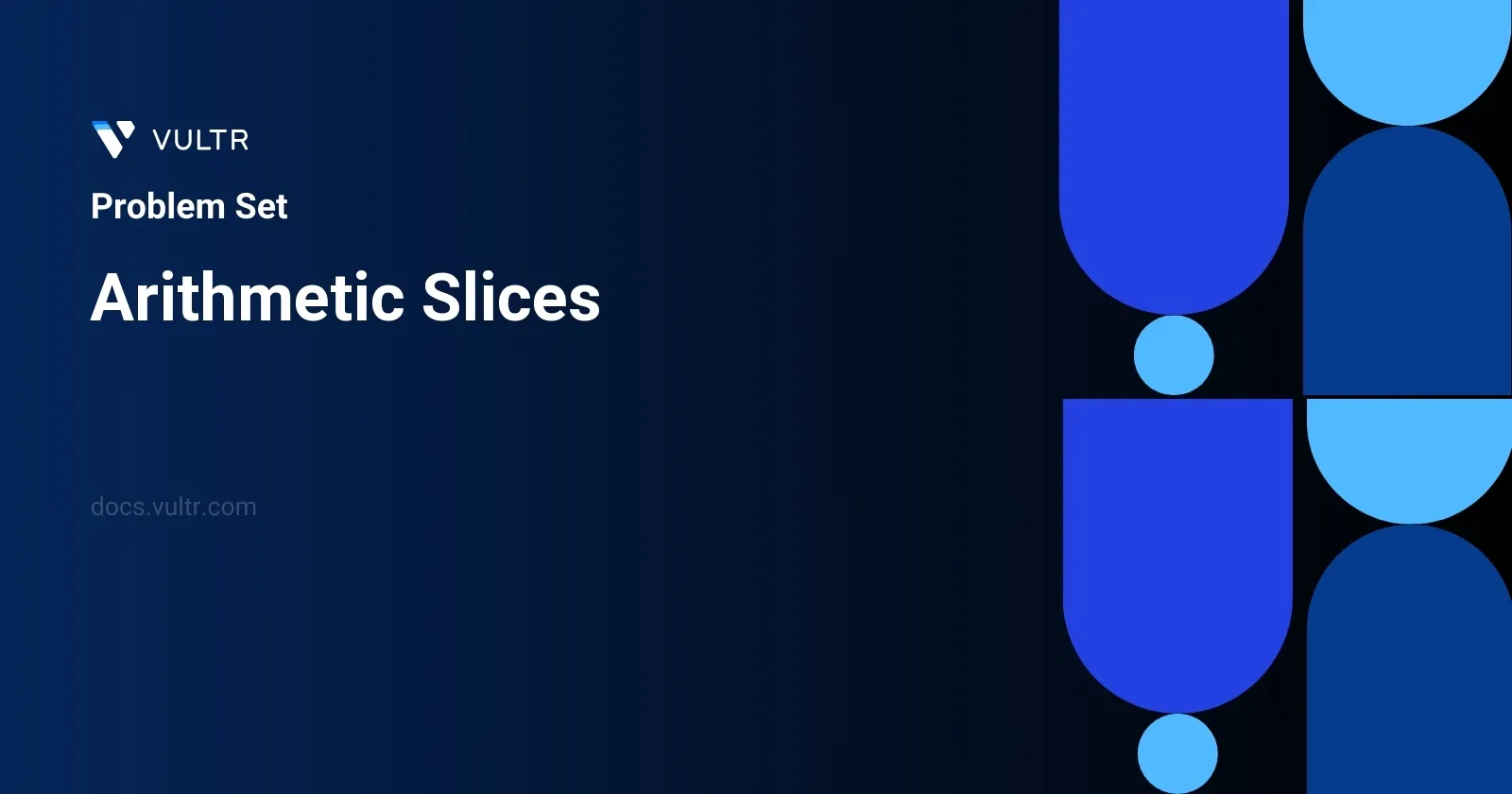
Problem Statement
In the field of mathematics, particularly in sequences, an array is termed arithmetic if it meets two criteria: it contains at least three elements, and the difference between any two consecutive elements is constant across the sequence. Arrays such as [1,3,5,7,9], where each successive number increases by 2, or [7,7,7,7], where each element is identical thus resulting in a difference of 0, are classical examples of arithmetic arrays.
In this context, your task is to determine how many contiguous subarrays (a subarray is a subset of consecutive elements in the original array) in a given integer array nums, qualify as arithmetic. The challenge involves not only identifying these subarrays but understanding their formation based on sequence rules.
Examples
Example 1
Input:
nums = [1,2,3,4]
Output:
3
Explanation:
We have 3 arithmetic slices in nums: [1, 2, 3], [2, 3, 4] and [1,2,3,4] itself.
Example 2
Input:
nums = [1]
Output:
0
Constraints
1 <= nums.length <= 5000-1000 <= nums[i] <= 1000
Approach and Intuition
The goal is to determine the number of contiguous subarrays that are arithmetic in nature. Every valid subarray must adhere to the definition of an arithmetic sequence, having:
- At least three elements
- A consistent difference between consecutive elements
Given the examples:
For the input
nums = [1,2,3,4], subarrays such as[1, 2, 3],[2, 3, 4], or even[1,2,3,4]itself are all valid arithmetic subarrays, each showing a consistent difference of1between consecutive elements. This results in an output of3.For the input
nums = [1], no arithmetic subarrays are possible since a single element cannot form a sequence that meets the required criteria of at least three consecutive numbers.
To solve this problem:
- Traverse the array and on each step, check if the current segment can extend a previously found arithmetic subarray. If a segment cannot be extended (i.e., the difference between consecutive elements changes), restart the count.
- Use a count variable to maintain how many valid subsequences end at a position, and an answer variable to aggregate these into a total.
- As you process and encounter valid arithmetic subarrays, add the size of possible subarrays to your total count result. For example, if a sequence of length 4 maintains the arithmetic property, it contains, in itself, three subarrays of size 3 (each offset by one element from the previous) and one subarray of size 4.
In terms of constraints, the solution approach should be efficient given the maximum possible array length (5000), making a nested loop approach potentially infeasible for the upper limits. Consideration of a linear or near-linear time complexity algorithm would be more appropriate to handle larger inputs effectively. The values of the elements (ranging between -1000 and 1000) do not directly complicate the approach since the concern primarily lies with the differences between them rather than their absolute values. The solution should ensure its correctness across the entire bounds of the array size, from the minimum of a single element (at which point no arithmetic subarrays are possible) to the maximum.
Solutions
- Java
public class Solution {
public int calculateArithmeticSubarrays(int[] array) {
int currentStreak = 0;
int totalSequences = 0;
for (int j = 2; j < array.length; j++) {
if (array[j] - array[j - 1] == array[j - 1] - array[j - 2]) {
currentStreak++;
} else {
totalSequences += currentStreak * (currentStreak + 1) / 2;
currentStreak = 0;
}
}
return totalSequences += currentStreak * (currentStreak + 1) / 2;
}
}
The provided Java solution addresses the problem of finding the number of arithmetic slices in an array. An arithmetic slice is a sequence of at least three elements where the difference between consecutive elements remains constant.
Here's the breakdown of the implementation:
- The program uses two integer variables,
currentStreakandtotalSequences.currentStreakkeeps track of the current sequence of arithmetic slices.totalSequencesstores the cumulative number of valid sequences.
- The method
calculateArithmeticSubarraystakes an integer arrayarrayas input and iterates through it starting from the third element (index 2). - Throughout the loop, the method checks if the current element and the two preceding elements form an arithmetic sequence by checking if the differences between consecutive numbers are equal.
- If they are:
- The
currentStreakis incremented by one because the current element extends the existing arithmetic slice.
- The
- If they are not:
- The method calculates the total number of complete arithmetic slices possible with the current streak (using the formula
currentStreak * (currentStreak + 1) / 2) and adds it tototalSequences. - Resets
currentStreakto zero since the streak was broken.
- The method calculates the total number of complete arithmetic slices possible with the current streak (using the formula
- After the loop, it adds any remaining sequences to
totalSequencesusing the same formula to ensure all sequences are counted. - The method finally returns
totalSequences.
This approach ensures each piece of the array is considered, efficiently counting all valid arithmetic slices. Adjustments or optimizations can be considered depending on the size and nature of the input data. If the input data is large or if performance is a concern, consider analyzing the efficiency of the current operations, particularly how the arithmetic checks and the updates to the total count are handled.